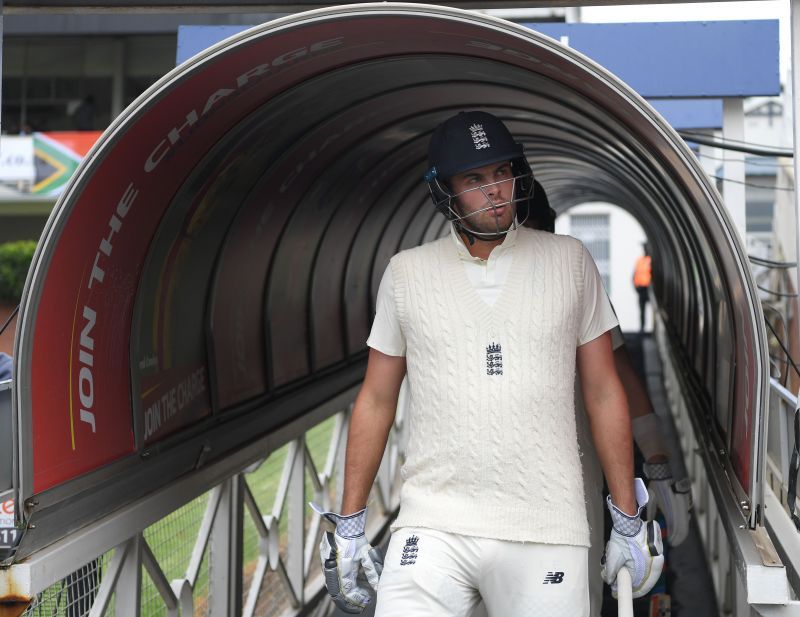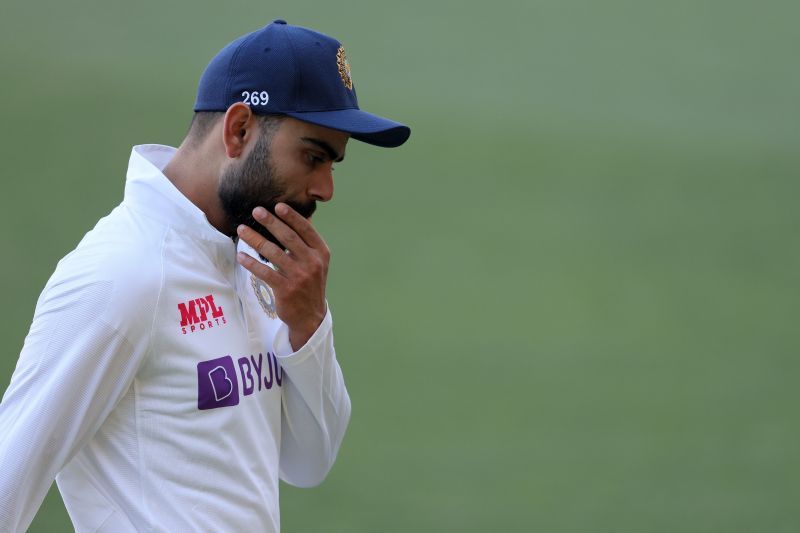
England cricket team's acid test relies on basic principles

Eight years ago, the England cricket team rocked up on Indian shores, hoping to solidify their status as the premier red-ball cricketing outfit on the planet. Additionally, they also had to contend with an Indian side, which was chomping at the bit to exact revenge, especially after the England cricket team trampled them 4-0, a year ago.
Unfortunately, though, the England cricket team, despite the stakes being at its crest, wilted in the opening encounter at Ahmedabad, losing by 9 wickets. Thus, at that juncture, it seemed that the optimism and the expectation that had surrounded the Three Lions, would represent another false dawn.
Yet, in the most arduous of circumstances, the England cricket team miraculously turned things around, courtesy a certain Kevin Pietersen, who blazed his way to arguably his greatest Test knock at Mumbai, and of course, Sir Alastair Cook – the English Messiah.
Subsequently, the England cricket team waltzed past India at Mumbai and Kolkata, before holding fort at Nagpur – a sequence of results that culminated in a 2-1 series success.

Since then, the Three Lions have won the Ashes twice and have conquered South Africa too. However, that conquest against India in India, perhaps represents the crescendo of their Test achievements in the 21st century.
More importantly though, India, since that reverse, haven’t lost a home rubber. Though Australia ran them close in the winter of 2017-18, the Men In Blue haven’t even envisioned a series defeat, let alone be subjected to it.
Thus, as the England cricket team arrives in India, it faces the prospect of tackling the seemingly indomitable opponent, and in conditions that could be as alien as humanly possible. And, to top it all off, the Three Lions also have to overcome the ghosts of 2016-17, wherein the visitors were chastened 4-0 in a five-match series.
Consequently, it would be pretty difficult for one to overstate the enormity of the challenge in front of the England cricket team. In fact, that is a sentiment Joe Root echoed, although he mentioned that the Three Lions might not find themselves in a better position to roar back into the elite echelon of Test cricket.
Having said that, there are still plenty of areas that the England cricket team might have to address. While some surfaced in the recently concluded series against Sri Lanka, others were at the forefront, back in 2016-17.

Firstly, apart from the second innings of the second Test against the Islanders, the English openers couldn’t buy a run. Dom Sibley and Zak Crawley were on a barbecue for Lasith Embuldeniya, with the left-arm spinner eventually accounting for all dismissals against the aforementioned batsmen (7 in total).
Over the years, teams that have historically been successful in India, have had bankable openers.
When the Three Lions outsmarted the Indians, both their opening batsmen scored runs. To put things into context, Nick Compton, who was much maligned on that tour and in the aftermath of it, still finished with 208 runs, at a decent average of 34.66.
As for Sir Alastair Cook, the left-hander plundered 562 runs in 4 matches – a tally that was head and shoulders above anyone else to have batted in the series. Though the numbers paint a picture for themselves, the importance of runs at the top of the order can’t be embroidered enough, especially in the sub-continent.
For starters, owing to the abrasive strips on offer, the new ball is perhaps the best time to bat and score runs. As the inning progresses, the ball becomes a lot softer and makes run-scoring considerably tougher. Moreover, it enables the spinners to control the game and prey on batting errors, rather than going searching for it.
However, with a decent opening stand, the batting unit has the luxury of managing the tempo of the encounter, thereby forcing the bowlers to make the play. Though that might seem pretty straightforward, it is an art very few touring teams have been able to master, at least in India.

Joe Root will play a massive role for the England cricket team
Apart from that, the England cricket team of course, require the security of Joe Root’s willow, with the Englishman being touted to replicate Sir Alastair Cook’s heroics, all those years ago. While that seems a significant mountain to climb, Joe Root has recently shown that he might’ve regained the tactical nous and the hunger to do so.
Throughout the series against Sri Lanka, the England cricket team skipper rarely got bogged down at the crease. As soon as he came out to bat, he did so with intent, meaning that even when boundaries were at a premium, he kept the scoreboard ticking. Subsequently, he reaped the rewards and notched up a couple of substantial scores.
On the flip side, Dom Sibley and Zak Crawley, at least until the final innings of the 2nd Test, failed to evolve an adequate mechanism. The openers were too tentative with their defensive technique and when they opted for attacking shots, it lacked the requisite conviction.
In 2012-13, the England cricket team emphasized the importance of keeping the scoreboard moving – something that ultimately led to them amassing massive totals. And, even though that might not always translate to a run rate of over runs per over, it is the intent (arguably the most over-used word in modern-day cricket) that takes bowlers aback, for they know that the batsmen are in for a fight, rather than being under siege.

A few moons ago, Joe Root embodied that approach to the tee in Sri Lanka. Perhaps, it might be time for the rest of the batting line-up to take cue and at least, be the supporting act the English skipper craves. Again, something that should ideally be ingrained into the system of every batsmen. Yet, something that often goes amiss in the cauldron of pressure.
On the bowling front, it is imperative that the England cricket team ties the Indian batsmen down. To put things into context, in 2012-13, the tourists managed to do so excellently. For that to happen though, Messrs. Dom Bess and Jack Leach need to come to the fore.
As far as numbers are concerned, Graeme Swann and Monty Panesar – two of England’s heroes from that tour, conceded 2.66 and 2.49 runs per over, respectively, throughout the series. In the recently concluded series against Sri Lanka though, Dom Bess and Jack Leach, despite bagging 12 and 10 scalps, saw their economy rate hover around the 3-run mark.
While the former had an economy rate of 2.99, the latter’s spiked up to 3.20, despite playing on pitches that were pretty conducive to spin bowling. In turn, when Sri Lanka decided to buckle down, most notably in the 1st innings of the 2nd Test, the English spinners were rendered unimaginative and blunt.
Furthermore, Dom Bess and Jack Leach will have much better players of spin to contend with, in India. Cheteshwar Pujara, despite all the chatter about his overseas strike rate, is exceptionally proactive against spin, whereas Shubman Gill doesn’t look too shabby either.

Virat Kohli, apart from a recent bout of ailments against leg spinners, has portrayed shades of invincibility, at least in the comforts of home. As for Rishabh Pant and Rohit Sharma, well, they are murderers of spin bowling, bluntly speaking. And, if India opt to play Hardik Pandya, the England cricket team spinners might have to confront an entirely novel predicament.
Thus, it is imperative that the visiting spinners keep things as tight as possible and force the Indians into errors, instead of lifting the run-scoring lid and allowing them to bat as per the latter’s whims and fancies.
Additionally, if the slower bowlers are able to curb the run-scoring, the likes of James Anderson, Jofra Archer and Stuart Broad could also come to the fore, akin to how Anderson turned up in 2012-13.
Most tellingly though, it is vital that the England cricket team matches the Indian outfit’s first-innings score, for any significant deficit could severely hamper their chances of victory.
The onus, hence, might seem to be on the batsmen. However, with the embarrassment of riches in India’s spin department, that could be particularly tedious, meaning that the bowling attack might have to do a bit of heavy lifting.
Contextually speaking, five of the eight highest run getters in the 2016-17 series were England cricket team batsmen. However, only one bowler notched up more than 10 wickets (Adil Rashid – 23 wickets at an average of 37.43). In contrast, Ravichandran Ashwin and Ravindra Jadeja shared 54 scalps amongst themselves – again highlighting that the visitors need their bowlers to step up. Unsurprisingly, the England cricket team were thumped 4-0.
Consequently, with only a handful of days remaining until the 1st Test at Chennai, there are plenty of quandaries that the England cricket team needs to answer. Unfortunately, each seems as onerous and taxing as the other. Yet, for a change, the visitors have some precedent to draw inspiration from.
Having said that, there is no denying the fact that despite the England cricket team’s recent successes in Sri Lanka, a series triumph in India remains the final frontier. Or, for people inclining towards scientific jargon, the acid test that has the potential to define an era of Test cricket.
So far, the England cricket team has done well to bristle with confidence while embarking on that particular sojourn. However, that bit of buoyancy could wither away just as swiftly, as previous English stalwarts would testify.
Thus, with so many uncontrollable elements in play, it might perhaps be wise for the England cricket team to shut out the white noise and concentrate on what lies right in front of them, instead of thinking too far ahead or harping about the past.
Rather poetically though, just as the England cricket team gears up for a prospective adventure into a promised, unflappable land, it seems that their acid test could, ultimately, be defined by pretty basic principles.